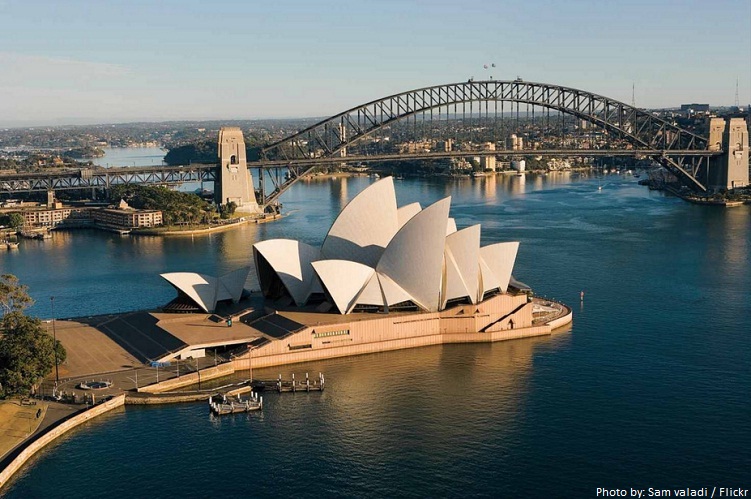

The warmth and appreciation of these tributes is remarkable. The Sydney Opera House has posted hundreds of tributes to the Danish architect on its web site. The fact that Utzon never returned to see the finished building after 1966 never diminished his deep-going connection with his work. Natural timbers on the floor and walls and the very fine off-form concrete ribbed ceilings complete a fine interior space. Gold highlights in Utzon's mural represent explosions of violins. Bach's Hamburg Symphony dominates one side of the space opposite a window wall overlooking the water. A colourful mural designed by the architect and based on C.P.E. Utzon was very proud of the Utzon Room, the first built interior space in the opera house that he actually designed. He recalled Utzon's comment on the interiors that deviated from his original design: "Every garden has a few weeds but that shouldn't stop you enjoying the garden." In the last decade of his life, Utzon and his son Jan collaborated in the refurbishment of the Sydney Opera House.Īustralian architect Richard Johnson, who is currently preparing to implement Utzon's design principles, has explained that Utzon saw the building as a "work in progress".

He was awarded the most prestigious architecture award, the Pritzker Prize, in 2003, and in 2007 the Sydney Opera House was declared a World Heritage Site. Utzon was accorded international recognition late in life, reflecting a growing appreciation of the merit of his Sydney Opera House design. Notable later works by Utzon and his two sons, Jan and Kim, include the Bagsvaerd Church near Copenhagen (1968-76), the Kuwait National Assembly (1971-83) and two more of his own houses on the Mediterranean island of Majorca (19), where he spent much of his later life. In 1966 he was forced out of the project by the New South Wales state government, leaving his extraordinary work to be finished by others. In 1957 Utzon was appointed to his most challenging and remarkable commission, the Sydney Opera House. Work was scarce, however, and he entered many architectural competitions. In 1945 Utzon established his own practice in Copenhagen and in 1952 designed his own house in Hellebaek. In Paris he met and held discussions with artist Fernand Leger and architect Le Corbusier. He worked with Alvar Aalto in Finland and in his travels met Frank Lloyd Wright, Charles Eames and the Finnish architect Eero Saarinen, who was later to be a member of the judging panel that selected Utzon's entry in the design competition for the Sydney Opera House. He entered the Royal Academy of Denmark in 1937 to study architecture, and was influenced by many leading figures of the Modern Movement, the dominant tendency in twentieth century architecture. Jørn Utzon, whose name is bound to his greatest, and perhaps one of the world's best-known post-World War II pieces of architecture, the Sydney Opera House, died in his sleep aged 90 on Saturday, November 29.


 0 kommentar(er)
0 kommentar(er)
